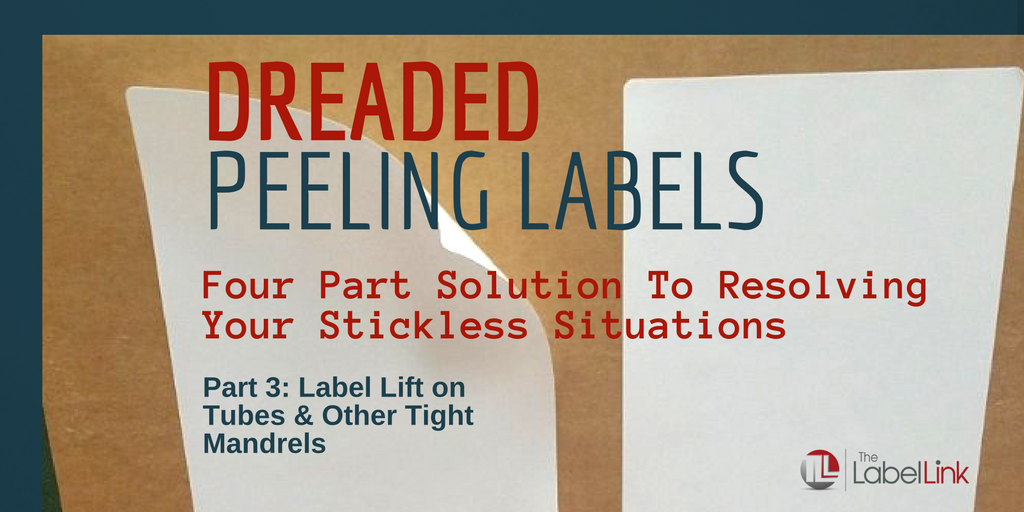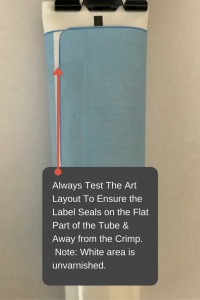
The Dreaded Label Lift Part 3: The Secret to Finding True No Peel Labels
Have you grown so frustrated with your labels lifting off from your containers that you’re willing to invest a good chunk of change in no peel labels? You’re not alone.
Having your labels peel, or lift, away from your product can hurt your brand image. It can make your product look like it’s less quality than it really is.
Before you spend money trying to get your labels to stick, it’s important to get to the bottom of what’s causing your labels to lift in the first place. There could be four main issues at stake here:
- Bad adhesive
- Substrate surface
- Tight mandrel (or diameter curve)
- Environmental conditions
I’ve already covered the causes of bad adhesive and the substrate surface. This week, I’m talking about tight mandrels, or small diameter curves.
Small Curves Could Mean Less Label Adhesion
Is your container small in diameter? It could make it harder for the label’s material to fully adhere, causing your labels to slowly peel away. Let’s look closer at the two most common underlying causes of these labels to peel away and how you can fix them to keep your labels affixed to your containers.
1. Rigidity of Material
Paper, laminated products, or rigid films, such as PET or PP, have one thing in common: They employ their “muscle” memory and like to go back to their original flat state. Wrap them tightly around your small container and they’ll fight back.
There are several ways to stop this from happening.
-

The blue area indicates the varnish which prints clear The first is perhaps the most obvious. Change your label’s material. If you’ve been using a rigid material for your labels, the solution is simple enough. You must change the material to one that’s more flexible.
- The next isn’t quite as obvious. If you’re using tube labels (wrapping your label around a cylinder) and are sealing at a pinch point on the crimp (the area where your label overlaps) you might not be allowing for enough overlap space. Consider shifting the seal area about ¼” away from the crimped edge so that the seal itself is relatively flat.
- Or, you might want to use a combination of these two solutions. Laminated labels are popular choices but this type of label is less flexible. Switch to using a spot varnish instead of laminate tube labels and be sure to increase the area where they overlap and you will see an instant difference.
2. Strength of the Adhesive
Sometimes, the adhesive itself isn’t strong enough to stick to the mandrel. This can make it harder for the label to stay put once it’s on your container.
Using stronger adhesive is probably the easiest and most common solution to this specific problem, but it can increase your price tag.
You might also want to try overlapping your label so that it sticks to itself. If you do, be sure you’re not using coatings or print in the overlap surface. This can also contribute to the lift.
Question: Do you have to print labels for small containers?
It’s a challenge to find the right labels for tight mandrels, or small diameter curves. Because the label is required to stretch into an unnatural state, you must be sure that you’re using the right material and the right adhesive.
